Want to bring out the natural beauty of your rock collection? A Shiny Rock can transform any space, whether it’s a garden, living room, or personal collection. At rockscapes.net, we’re passionate about helping you discover the hidden potential within every stone. Let’s explore an easy, quick way to polish rocks using simple techniques and materials, and discover how to maintain their luster. Delve into various rock polishing methods, from using oil to employing professional tumbling, and learn how to identify the best rocks for a lasting shine.
1. What Makes a Shiny Rock So Appealing?
A shiny rock is appealing because it showcases the intrinsic beauty and unique qualities of the stone. The reflective surface enhances the colors, patterns, and textures, making it visually striking. The appeal extends beyond aesthetics, touching on a sense of wonder and connection to nature, especially when used in landscape design. At rockscapes.net, we understand that a shiny rock can transform any space into a captivating environment.
2. What Types of Rocks Naturally Shine the Best?
Certain rocks naturally shine better due to their mineral composition and hardness. Rocks with a high silica content, such as quartz, agate, and jasper, tend to polish well. Igneous rocks like obsidian, and metamorphic rocks like marble also hold a beautiful shine.
Here are a few examples:
| Rock Type | Description | Best Polishing Method |
|---|---|---|
| Quartz | Hard, durable, various colors | Tumbling, polishing compounds |
| Agate | Banded chalcedony, variety of colors | Tumbling, lapidary polishing |
| Jasper | Opaque chalcedony, rich colors | Tumbling, lapidary polishing |
| Obsidian | Volcanic glass, smooth texture | Hand polishing, gentle tumbling |
| Marble | Metamorphic rock, elegant appearance | Polishing compounds, soft cloths |
3. What is the Quickest Way to Make a Rock Shiny?
The quickest way to make a rock shiny is by using oil. This method is ideal for instantly enhancing the appearance of rocks without the need for extensive equipment or time. Here’s a step-by-step guide:
Step 1: Cleaning the Rocks
Thoroughly wash the rocks with soap and water to remove any dirt, debris, or surface contaminants. Use a brush to scrub off stubborn particles. Rinse the rocks thoroughly and allow them to dry completely before proceeding.
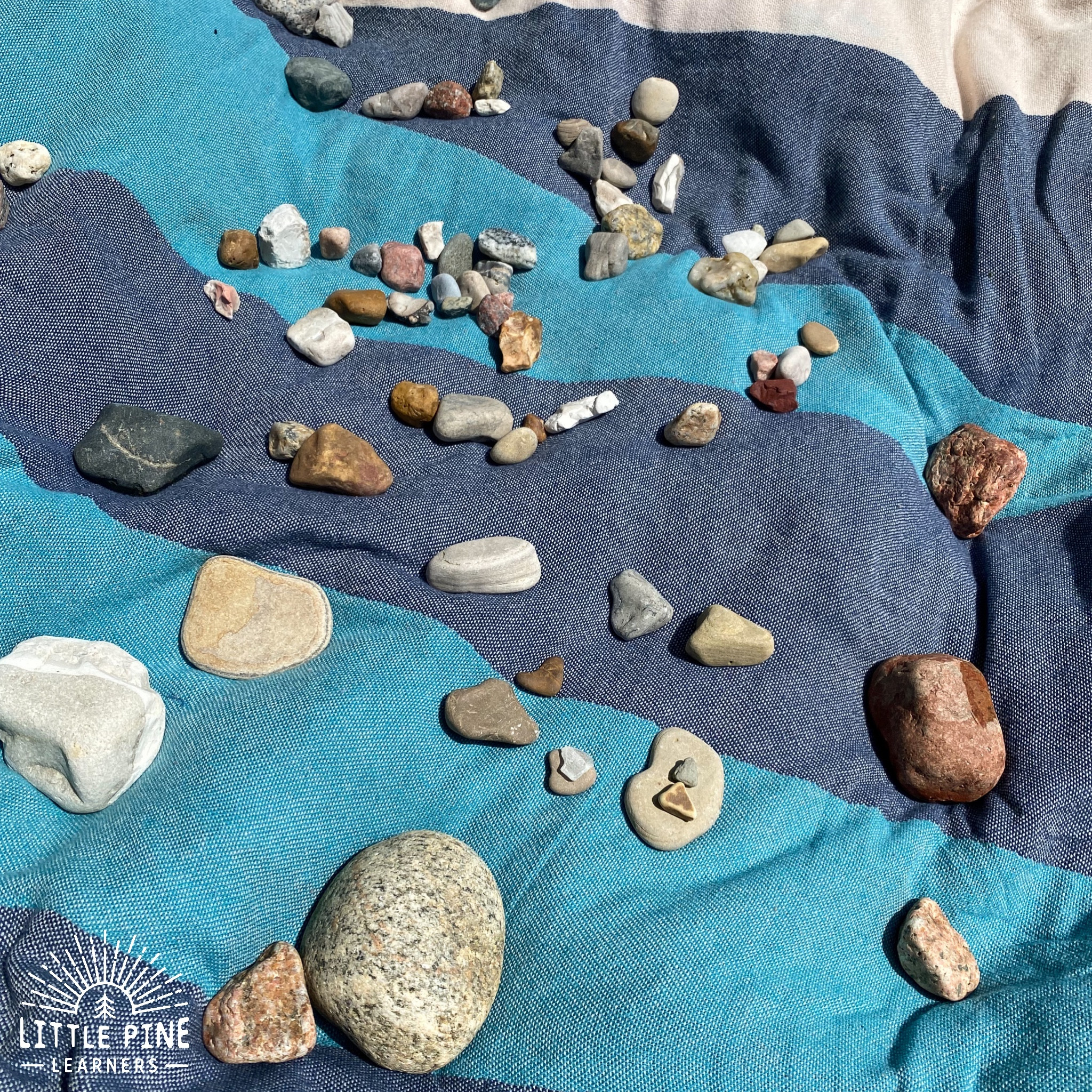 Cleaned stones drying in the sun, preparing for oil application to enhance their shine and natural colors
Cleaned stones drying in the sun, preparing for oil application to enhance their shine and natural colors
Step 2: Applying Mineral Oil
Place the clean, dry rocks in a jar or container. Pour mineral oil over the rocks until they are fully submerged. Ensure that every rock is completely covered to achieve an even shine.
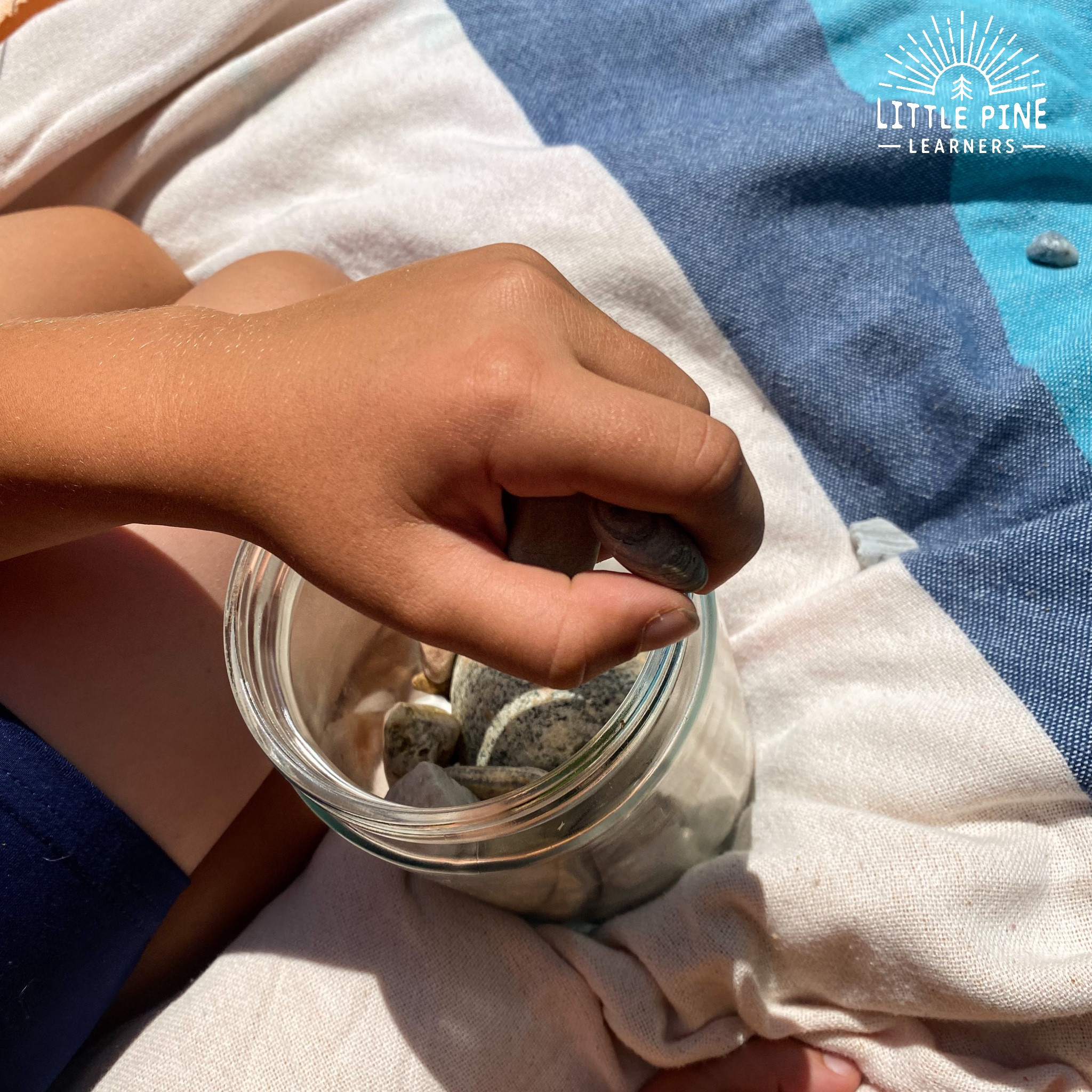 Stones submerged in mineral oil within a glass jar, ready for soaking to enhance their natural luster and details
Stones submerged in mineral oil within a glass jar, ready for soaking to enhance their natural luster and details
Step 3: Soaking the Rocks
Cover the container and let the rocks soak in the oil for at least two hours. Soaking allows the oil to penetrate the pores of the rocks, enhancing their color and shine. For best results, consider soaking the rocks overnight.
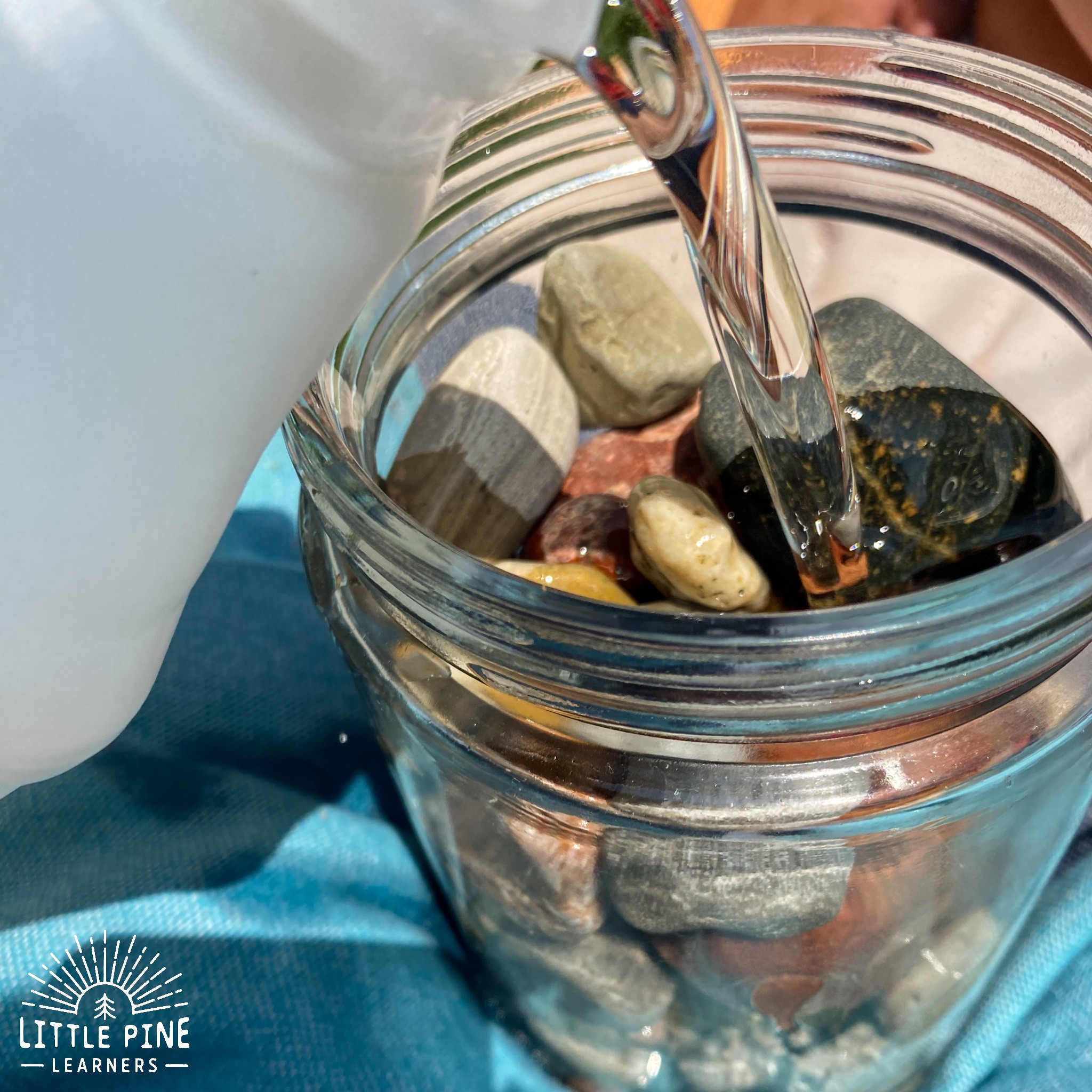 Rocks soaking in mineral oil, illustrating the process of enhancing their natural shine and color through oil immersion
Rocks soaking in mineral oil, illustrating the process of enhancing their natural shine and color through oil immersion
Step 4: Draining Excess Oil
Place a strainer over a bowl and carefully pour the contents of the jar into the strainer. This will separate the rocks from the excess oil, allowing you to reuse the oil for future polishing sessions.
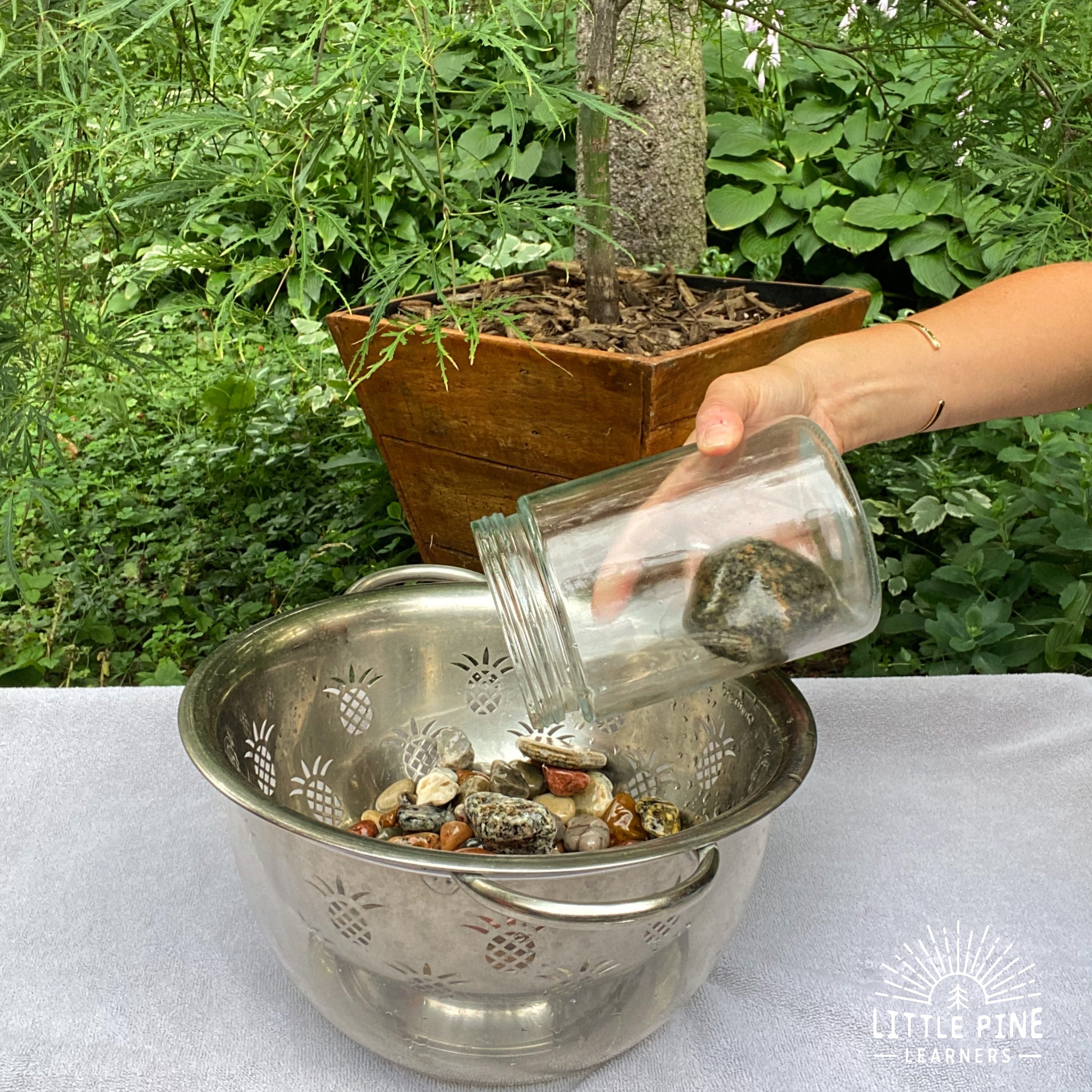 Excess mineral oil being strained from polished stones, showcasing the efficient process of oil recovery for reuse
Excess mineral oil being strained from polished stones, showcasing the efficient process of oil recovery for reuse
Step 5: Initial Polishing
Use a paper towel to gently polish each rock, removing any remaining oil on the surface. This step helps to even out the shine and prepare the rocks for the final polishing stage.
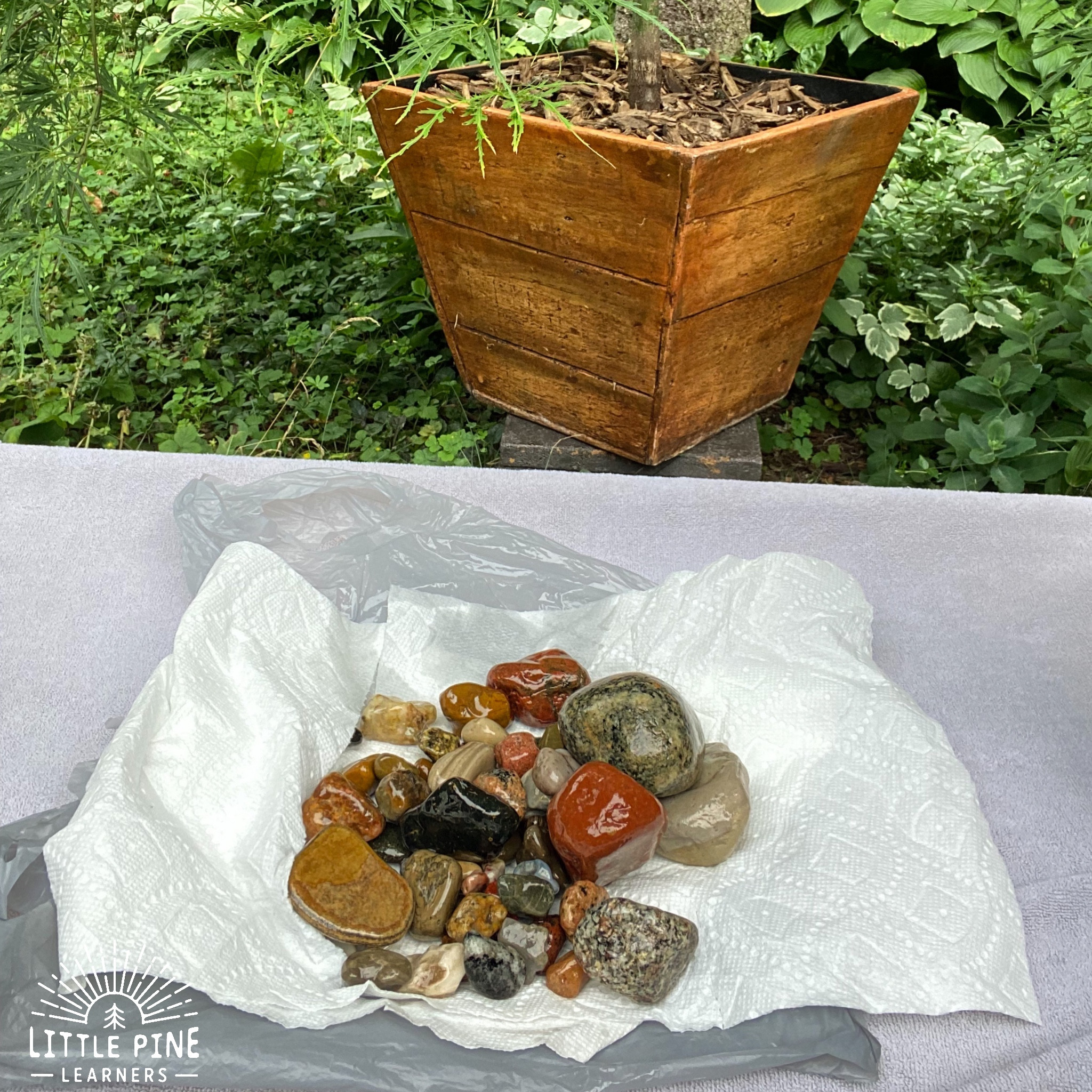 Polishing stones with a paper towel to remove excess oil, enhancing their shine and revealing natural details
Polishing stones with a paper towel to remove excess oil, enhancing their shine and revealing natural details
Step 6: Final Polishing
Use a soft, absorbent towel to buff each rock until it shines. Apply gentle pressure and continue buffing until the desired level of shine is achieved. This final polishing step brings out the rock’s natural beauty.
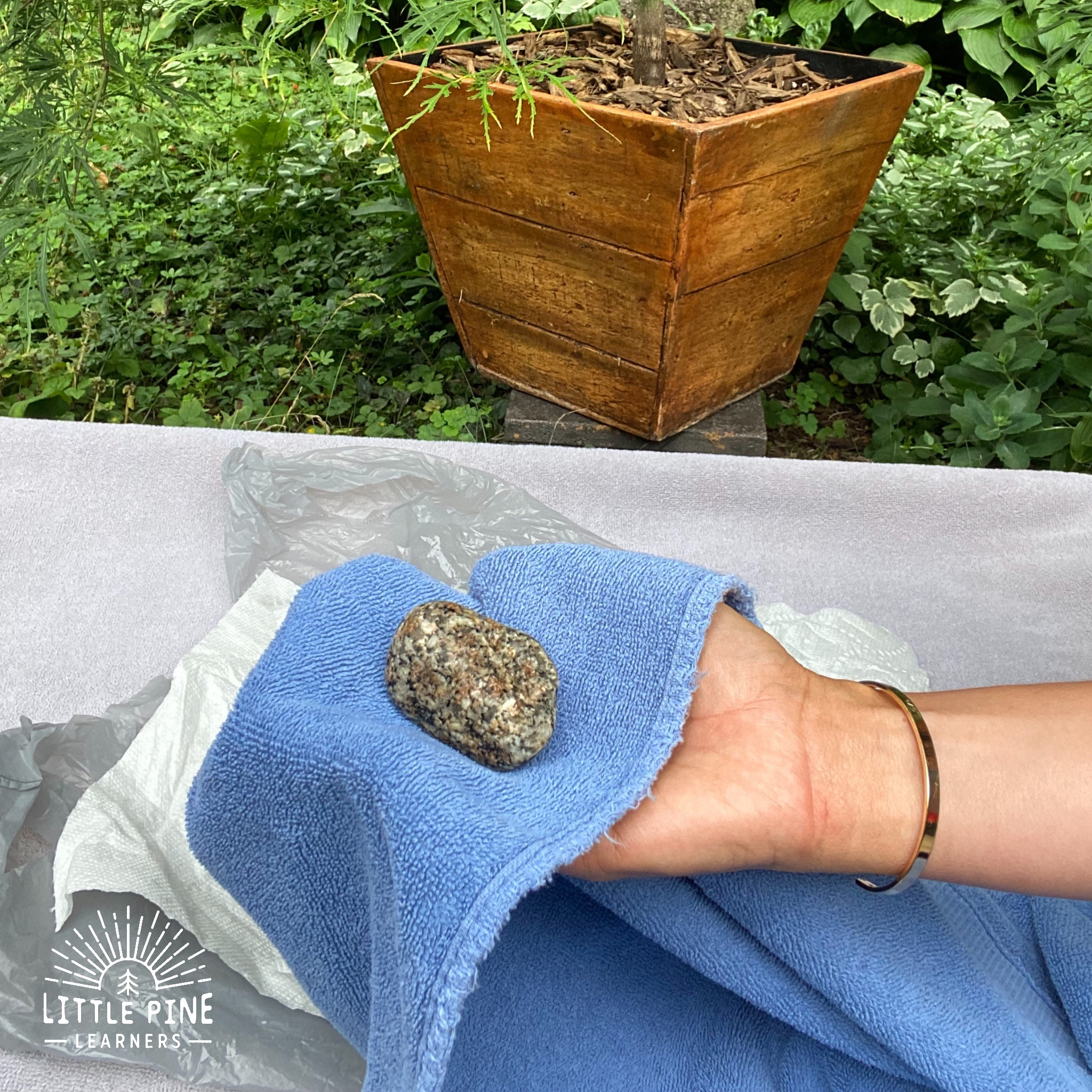 Polished stones gleaming on a towel, showcasing the effectiveness of oil and buffing in enhancing their natural luster
Polished stones gleaming on a towel, showcasing the effectiveness of oil and buffing in enhancing their natural luster
4. What are the Benefits of Using Oil to Polish Rocks?
Using oil to polish rocks offers several benefits:
- Enhances Color: Oil penetrates the rock’s surface, bringing out the vibrancy and depth of its natural colors.
- Instant Results: The oil method provides immediate shine without the need for lengthy tumbling processes.
- Simple and Accessible: This technique requires minimal equipment and is easy for anyone to do at home.
- Cost-Effective: Mineral oil and jojoba oil are relatively inexpensive and can be reused for multiple polishing sessions.
- Preserves Natural Beauty: Oil polishing enhances the rock’s existing features without altering its natural texture.
5. How Does Rockscapes.net Enhance Your Landscape Design with Shiny Rocks?
At rockscapes.net, we specialize in providing high-quality rocks and design inspiration to transform your landscape. Our expertise ensures that you select the perfect stones for your project. Whether you are looking to create a zen garden, a modern outdoor living space, or a natural rock feature, shiny rocks add an element of sophistication and charm.
Address: 1151 S Forest Ave, Tempe, AZ 85281, United States
Phone: +1 (480) 965-9011
Website: rockscapes.net
6. What Other Oils Can Be Used to Polish Rocks?
Besides mineral oil, jojoba oil is a great alternative for polishing rocks. Jojoba oil is environmentally friendly and closely mimics the natural oils produced by the skin. It’s non-toxic, odorless, and biodegradable, making it a sustainable choice.
7. What are the Long-Term Polishing Methods for Rocks?
For a more durable and lasting shine, consider these long-term polishing methods:
- Rock Tumbling: This method involves using a rock tumbler with abrasive grits to gradually smooth and polish the rocks over several weeks.
- Lapidary Polishing: Using specialized lapidary equipment such as polishing wheels and compounds, this technique is ideal for achieving a professional-grade shine on harder stones.
8. How Does Rock Tumbling Work?
Rock tumbling is a multi-stage process that gradually smooths and polishes rocks. It typically involves four stages:
- Coarse Grinding: Removes rough edges and shapes the rocks using coarse grit.
- Medium Grinding: Smooths the surfaces further using medium grit.
- Fine Grinding: Prepares the rocks for polishing using fine grit.
- Polishing: Achieves the final shine using polishing compounds like aluminum oxide.
9. What Equipment Is Needed for Rock Tumbling?
To start rock tumbling, you’ll need:
- Rock Tumbler: A rotary tumbler is most common for beginners.
- Abrasive Grit: Coarse, medium, and fine grits are necessary for the grinding stages.
- Polishing Compound: Aluminum oxide or cerium oxide for the final polish.
- Rocks: Select rocks that are similar in hardness for best results.
- Water: To mix with the grit and keep the rocks clean.
10. What Are the Best Rocks for Rock Tumbling?
The best rocks for rock tumbling are those with a Mohs hardness of 6 or higher. These include:
- Agate
- Jasper
- Quartz
- Obsidian
- Petrified Wood
11. How Do You Prepare Rocks for Tumbling?
Preparing rocks for tumbling involves:
- Sorting: Group rocks by similar hardness to ensure even polishing.
- Cleaning: Remove any dirt or debris with soap and water.
- Shaping: Break down any overly large or oddly shaped rocks to prevent damage to the tumbler.
12. How Long Does It Take to Tumble Rocks?
The rock tumbling process typically takes between four to six weeks, with each stage lasting about a week. Patience is key to achieving a high-quality shine.
13. What are the Benefits of Rock Tumbling?
- Durable Shine: Tumbling creates a long-lasting, professional-grade shine.
- Smooth Surfaces: The process smooths rough edges and surfaces, making the rocks safe to handle.
- Enhanced Beauty: Tumbling brings out the natural colors and patterns in the rocks.
- Therapeutic Activity: Many find the process of tumbling rocks to be relaxing and rewarding.
14. What Safety Precautions Should Be Taken When Rock Tumbling?
- Wear a Dust Mask: When handling dry grit and polishing compounds, wear a dust mask to avoid inhaling fine particles.
- Wear Gloves: Protect your hands from irritation by wearing gloves when handling the rocks and grit.
- Work in a Well-Ventilated Area: Ensure proper ventilation to avoid inhaling dust and fumes.
- Keep Away from Children and Pets: Store tumbling equipment and materials out of reach of children and pets to prevent accidents.
15. How Can Lapidary Polishing Enhance the Shine of Rocks?
Lapidary polishing uses specialized equipment like polishing wheels and compounds to achieve a high-gloss finish on rocks. This method is ideal for harder stones that require more intensive polishing.
16. What Equipment Is Needed for Lapidary Polishing?
- Lapidary Machine: A machine with rotating polishing wheels.
- Polishing Wheels: Various grit sizes for different stages of polishing.
- Polishing Compounds: Diamond paste, aluminum oxide, or cerium oxide.
- Water: To keep the rocks and polishing wheels cool.
- Safety Glasses: To protect your eyes from debris.
17. What Steps Are Involved in Lapidary Polishing?
- Grinding: Shape the rock using a coarse grinding wheel.
- Sanding: Smooth the surface with progressively finer sanding wheels.
- Polishing: Apply polishing compounds to the polishing wheel to achieve a high shine.
- Cleaning: Rinse the rock thoroughly to remove any residue.
18. What Are the Best Rocks for Lapidary Polishing?
Harder stones with intricate patterns and colors are ideal for lapidary polishing:
- Agate
- Jasper
- Quartz
- Petrified Wood
- Obsidian
19. How Does Rockscapes.net Help You Choose the Right Rocks for Your Project?
Rockscapes.net offers a wide selection of high-quality rocks perfect for any landscaping or decorative project. We provide detailed information on each type of rock, including its hardness, color, and best uses. Our team of experts is available to help you choose the right rocks to achieve your desired aesthetic and functional goals.
Address: 1151 S Forest Ave, Tempe, AZ 85281, United States
Phone: +1 (480) 965-9011
Website: rockscapes.net
20. How Do You Maintain the Shine of Polished Rocks?
To maintain the shine of polished rocks:
- Regular Cleaning: Wipe the rocks with a soft cloth to remove dust and dirt.
- Re-Oiling: For oil-polished rocks, reapply a thin layer of oil every few weeks to maintain the shine.
- Avoid Abrasive Cleaners: Do not use harsh chemicals or abrasive cleaners that can dull the surface.
- Protective Coating: Apply a sealant or wax to protect the shine and prevent scratches.
21. How Can Shiny Rocks Enhance a Garden Landscape?
Shiny rocks can greatly enhance a garden landscape by adding texture, color, and visual interest. Use them to create:
- Pathways: Line garden paths with shiny rocks for an elegant and natural look.
- Water Features: Incorporate polished stones into fountains or ponds for added sparkle.
- Rock Gardens: Create a stunning rock garden featuring a variety of shiny rocks and drought-tolerant plants.
- Borders: Use shiny rocks to define garden beds and create a polished border.
- Focal Points: Place larger, eye-catching shiny rocks as focal points in your garden design.
22. What Are Some Creative Ways to Use Shiny Rocks Indoors?
Indoors, shiny rocks can be used in numerous creative ways:
- Decorative Bowls: Fill bowls or vases with polished stones for a unique centerpiece.
- Table Accents: Scatter shiny rocks on tables or shelves to add a touch of nature to your décor.
- Terrariums: Use polished stones as a base for terrariums to enhance their aesthetic appeal.
- Jewelry Making: Incorporate shiny rocks into handmade jewelry for a personalized touch.
- Paperweights: Use larger polished stones as stylish and functional paperweights.
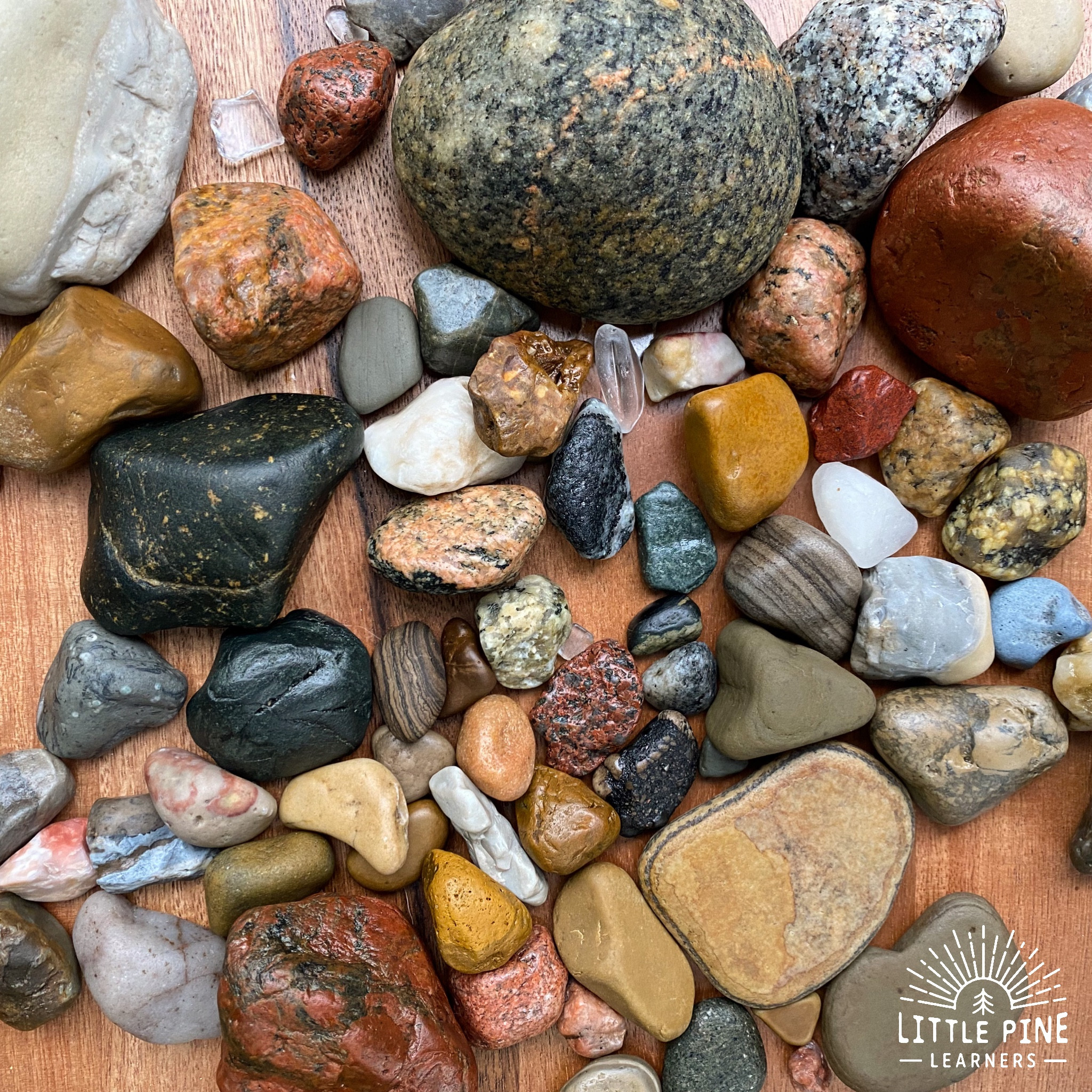 Assortment of polished stones displaying a vibrant array of colors and textures, ideal for indoor decoration
Assortment of polished stones displaying a vibrant array of colors and textures, ideal for indoor decoration
23. What Are the Most Common Mistakes to Avoid When Polishing Rocks?
- Using Rocks of Varying Hardness: Mixing rocks of different hardness levels can lead to uneven polishing.
- Skipping Stages: Omitting or shortening the grinding stages can result in a less polished finish.
- Using Contaminated Grit: Ensure that your grit and polishing compounds are clean to avoid scratches.
- Overloading the Tumbler: Overfilling the tumbler can prevent the rocks from polishing properly.
- Neglecting Safety Precautions: Always wear appropriate safety gear to protect yourself from dust and debris.
24. How Does Weathering Affect the Shine of Rocks?
Weathering can dull the shine of rocks over time. Exposure to sun, rain, and wind can erode the surface, reducing its reflectivity. To protect the shine:
- Apply Sealants: Use a UV-resistant sealant to protect the rocks from sun damage.
- Regular Cleaning: Regularly clean the rocks to remove dirt and pollutants.
- Indoor Display: Display delicate or highly polished rocks indoors to minimize exposure to the elements.
25. What Types of Sealants Are Best for Protecting Shiny Rocks?
The best sealants for protecting shiny rocks are:
- Acrylic Sealants: Provide good UV protection and enhance the color of the rocks.
- Polyurethane Sealants: Offer excellent durability and water resistance.
- Epoxy Coatings: Create a hard, protective layer that is resistant to scratches and chemicals.
26. How Can You Identify a Naturally Shiny Rock?
A naturally shiny rock will have a smooth, reflective surface without any artificial treatments. Look for rocks with:
- High Silica Content: Rocks like quartz and agate naturally polish well.
- Fine-Grained Texture: A smooth texture indicates that the rock will hold a shine.
- Natural Luster: Some rocks have a natural sheen due to their mineral composition.
27. How Can Shiny Rocks Be Used in Zen Gardens?
Shiny rocks are perfect for creating a serene and contemplative atmosphere in zen gardens. Use them to:
- Create Patterns: Arrange polished stones in patterns to represent water or mountains.
- Balance and Harmony: Place rocks strategically to create balance and harmony in the garden design.
- Focal Points: Use larger shiny rocks as focal points to draw the eye and create visual interest.
- Meditation Spaces: Incorporate polished stones into meditation spaces to promote relaxation and mindfulness.
28. What is the Role of Shiny Rocks in Feng Shui?
In Feng Shui, shiny rocks are believed to bring positive energy and balance to a space. They can be used to:
- Enhance Wealth: Place shiny rocks in the wealth corner of your home to attract prosperity.
- Promote Health: Use polished stones in the health area to promote well-being.
- Balance Elements: Incorporate rocks to balance the earth element in your environment.
- Create Harmony: Arrange stones to create a sense of harmony and balance in your living spaces.
29. How Do Professional Landscapers Use Shiny Rocks?
Professional landscapers use shiny rocks to add sophistication and visual appeal to outdoor spaces. They incorporate them into:
- High-End Residential Projects: Creating elegant and luxurious garden designs.
- Commercial Landscapes: Enhancing the aesthetic appeal of business properties.
- Public Parks: Adding unique and eye-catching features to public spaces.
- Water Features: Designing stunning water features with polished stones.
- Custom Rock Installations: Creating custom rock formations and installations for unique landscapes.
30. What are the Latest Trends in Using Shiny Rocks in Landscaping?
- Sustainable Landscaping: Using locally sourced, natural rocks to reduce environmental impact.
- Xeriscaping: Incorporating drought-tolerant plants and rocks to conserve water.
- Modern Zen Gardens: Creating minimalist gardens with carefully placed polished stones.
- Vertical Gardens: Adding shiny rocks to vertical gardens for texture and visual interest.
- LED Lighting: Highlighting shiny rocks with LED lighting to create stunning nighttime effects.
31. How Can You Incorporate Shiny Rocks into Water Features?
Shiny rocks are an excellent addition to water features:
- Pond Linings: Line the bottom of ponds with polished stones for a natural and elegant look.
- Waterfall Accents: Place shiny rocks around waterfalls to enhance their visual appeal.
- Fountain Bases: Use polished stones as a base for fountains to add a touch of sophistication.
- Stream Beds: Create a natural-looking stream bed with a variety of shiny rocks.
- Edge Detailing: Use shiny rocks to detail the edges of water features for a polished finish.
32. What are the Best Plants to Pair with Shiny Rocks in a Garden?
When pairing plants with shiny rocks, consider:
- Drought-Tolerant Plants: Succulents, cacti, and ornamental grasses.
- Low-Maintenance Plants: Lavender, rosemary, and thyme.
- Native Plants: Plants that are native to your region for sustainability.
- Contrasting Textures: Plants with contrasting textures to enhance the visual appeal of the rocks.
- Complementary Colors: Plants with colors that complement the colors of the rocks.
33. What are Some Unique Rock Garden Design Ideas?
- Alpine Gardens: Recreate a mountain landscape with shiny rocks and alpine plants.
- Desert Gardens: Design a desert-themed garden with cacti, succulents, and polished stones.
- Zen Gardens: Create a minimalist garden with carefully placed rocks and gravel.
- Cottage Gardens: Incorporate shiny rocks into a charming cottage garden with flowering plants.
- Sculptural Gardens: Create a sculptural garden with unique rock formations and polished stones.
34. How Can You Use Lighting to Enhance Shiny Rocks in Your Landscape?
Strategic lighting can dramatically enhance the beauty of shiny rocks:
- Spotlights: Use spotlights to highlight individual rocks or rock formations.
- Uplighting: Place lights at the base of rocks to create a dramatic effect.
- Path Lighting: Line pathways with lights to illuminate polished stones.
- Underwater Lighting: Use underwater lights to enhance shiny rocks in water features.
- Color-Changing Lights: Use color-changing lights to create dynamic and eye-catching displays.
35. What Are Some Budget-Friendly Ways to Incorporate Shiny Rocks into Your Landscape?
- Collect Your Own Rocks: Gather rocks from local sources to save money.
- Buy in Bulk: Purchase rocks in bulk from suppliers to get a better price.
- DIY Projects: Create your own rock features and installations.
- Repurpose Materials: Use recycled materials as a base for your rock designs.
- Focus on Small Areas: Concentrate on small areas to make a big impact without breaking the bank.
36. How Can You Create a Shiny Rock Mosaic?
Creating a shiny rock mosaic is a fun and creative way to add visual interest to your landscape:
- Gather Materials: Collect a variety of shiny rocks in different colors and sizes.
- Prepare the Surface: Clean and prepare the surface where you will create the mosaic.
- Design the Pattern: Plan out your mosaic design on paper before you begin.
- Adhere the Rocks: Use a strong adhesive to attach the rocks to the surface.
- Grout the Mosaic: Fill in the gaps between the rocks with grout.
- Seal the Mosaic: Apply a sealant to protect the mosaic from the elements.
37. What are the Benefits of Using Local Rocks in Your Landscape?
Using local rocks offers numerous benefits:
- Environmental Sustainability: Reduces the carbon footprint associated with transportation.
- Cost Savings: Eliminates shipping costs and supports local businesses.
- Authenticity: Creates a landscape that is authentic to your region.
- Unique Character: Adds unique character and charm to your outdoor spaces.
- Community Support: Supports local quarries and rock suppliers.
38. How Does Rockscapes.net Ensure the Quality of Its Rocks?
At rockscapes.net, we are committed to providing the highest quality rocks for your landscaping needs. We carefully source our rocks from reputable quarries and suppliers, ensuring that they meet our strict standards for quality, durability, and aesthetic appeal.
Address: 1151 S Forest Ave, Tempe, AZ 85281, United States
Phone: +1 (480) 965-9011
Website: rockscapes.net
39. How Can You Clean Shiny Rocks in a Water Feature?
To keep shiny rocks in water features clean:
- Regular Cleaning: Clean the rocks regularly with a brush and water.
- Algae Control: Use an algaecide to prevent algae growth.
- Water Changes: Change the water in the feature regularly to prevent buildup of contaminants.
- Filter System: Install a filter system to keep the water clean and clear.
- Natural Cleaners: Use natural cleaners like vinegar to remove stains and mineral deposits.
40. How Can Shiny Rocks Be Used to Create a Beach-Themed Garden?
To create a beach-themed garden with shiny rocks:
- Sand Base: Use a sand base to mimic a beach setting.
- Coastal Plants: Incorporate coastal plants like sea grass and beach roses.
- Driftwood: Add driftwood to enhance the beachy feel.
- Seashells: Scatter seashells among the rocks for added detail.
- Blue Accents: Use blue accents to represent the ocean.
41. What Role Do Shiny Rocks Play in Erosion Control?
Shiny rocks can play a role in erosion control by:
- Stabilizing Soil: Helping stabilize soil on slopes and prevent erosion.
- Creating Barriers: Creating barriers to slow down water flow and reduce erosion.
- Retaining Walls: Using larger rocks to build retaining walls.
- Drainage Systems: Incorporating rocks into drainage systems to improve water flow.
- Ground Cover: Using smaller rocks as ground cover to protect the soil.
42. How Can You Use Shiny Rocks to Create a Fire Pit Area?
To create a fire pit area with shiny rocks:
- Surround the Pit: Surround the fire pit with shiny rocks for a decorative touch.
- Seating Area: Create a seating area with rocks and comfortable cushions.
- Pathway Lighting: Use pathway lighting to illuminate the area at night.
- Heat-Resistant Rocks: Use heat-resistant rocks around the fire pit.
- Safety Measures: Take necessary safety precautions when using a fire pit.
43. How Can Shiny Rocks Be Used in Xeriscaping?
Shiny rocks are ideal for xeriscaping:
- Mulch Alternative: Use rocks as a mulch alternative to conserve water.
- Drainage: Improve drainage in dry areas.
- Heat Reflection: Reflect heat to reduce plant stress.
- Aesthetic Appeal: Add aesthetic appeal to the landscape.
- Low Maintenance: Require minimal maintenance.
44. What Are the Pros and Cons of Polishing Your Own Rocks Versus Buying Polished Rocks?
Polishing your own rocks:
Pros:
- Cost Savings: Can be more cost-effective in the long run.
- Customization: Allows for customization and personal satisfaction.
- Therapeutic: Can be a therapeutic and rewarding activity.
Cons:
- Time Investment: Requires a significant time investment.
- Equipment Costs: Involves upfront equipment costs.
- Learning Curve: Requires a learning curve to achieve professional results.
Buying polished rocks:
Pros:
- Convenience: Offers convenience and immediate results.
- Professional Quality: Provides professional quality and consistent shine.
- Variety: Offers a wide variety of rocks to choose from.
Cons:
- Higher Cost: Can be more expensive than polishing your own rocks.
- Less Customization: Offers less customization and personal satisfaction.
45. How Can You Use Shiny Rocks to Create a Meditative Garden Space?
Shiny rocks can enhance meditative garden spaces:
- Arrangement: Carefully arrange stones to promote balance and harmony.
- Focal Points: Use larger shiny rocks as focal points for meditation.
- Minimalist Design: Keep the design minimalist to avoid distractions.
- Quiet Area: Choose a quiet area for the garden to promote relaxation.
- Natural Elements: Incorporate natural elements like water and plants.
46. What Are the Key Considerations When Designing a Landscape with Shiny Rocks?
- Site Analysis: Assess the site’s soil, drainage, and sun exposure.
- Design Plan: Create a detailed design plan before you begin.
- Rock Selection: Choose the right types of rocks for your design and climate.
- Installation: Install the rocks properly to ensure stability and longevity.
- Maintenance: Plan for ongoing maintenance to keep the landscape looking its best.
47. How Can Shiny Rocks Be Used to Enhance a Patio or Deck?
Shiny rocks are versatile for patios and decks:
- Planters: Use them in planters to add texture and visual interest.
- Edging: Edge the patio or deck with rocks for a polished look.
- Focal Points: Place larger rocks as focal points to draw the eye.
- Water Features: Incorporate small water features with polished stones.
- Fire Pits: Create a cozy fire pit area with shiny rocks.
48. What are the Best Color Combinations for Shiny Rocks in a Landscape?
- Monochromatic: Use different shades of the same color for a cohesive look.
- Complementary: Combine complementary colors like blue and orange for a vibrant contrast.
- Analogous: Use analogous colors like green and blue for a harmonious blend.
- Triadic: Combine three colors that are evenly spaced on the color wheel.
- Neutral: Use neutral colors like gray and beige for a sophisticated look.
49. How Does the Size of the Rock Affect Its Use in a Landscape?
- Small Rocks: Ideal for ground cover, pathways, and small details.
- Medium Rocks: Suitable for borders, edging, and small features.
- Large Rocks: Best for focal points, retaining walls, and dramatic installations.
50. What are the Best Types of Lighting to Highlight Shiny Rocks at Night?
- LED Spotlights: Provide focused lighting to highlight individual rocks.
- Uplighting: Creates a dramatic effect by lighting rocks from below.
- Path Lighting: Illuminates pathways and showcases polished stones.
- String Lights: Adds a festive touch and enhances the ambiance.
- Solar Lights: Offers an eco-friendly lighting solution.
Ready to elevate your landscape with the timeless beauty of shiny rocks? Visit rockscapes.net today to explore our extensive selection of high-quality stones, find inspiration for your next project, and connect with our team of experts for personalized advice. Let us help you transform your outdoor space into a stunning showcase of natural artistry.
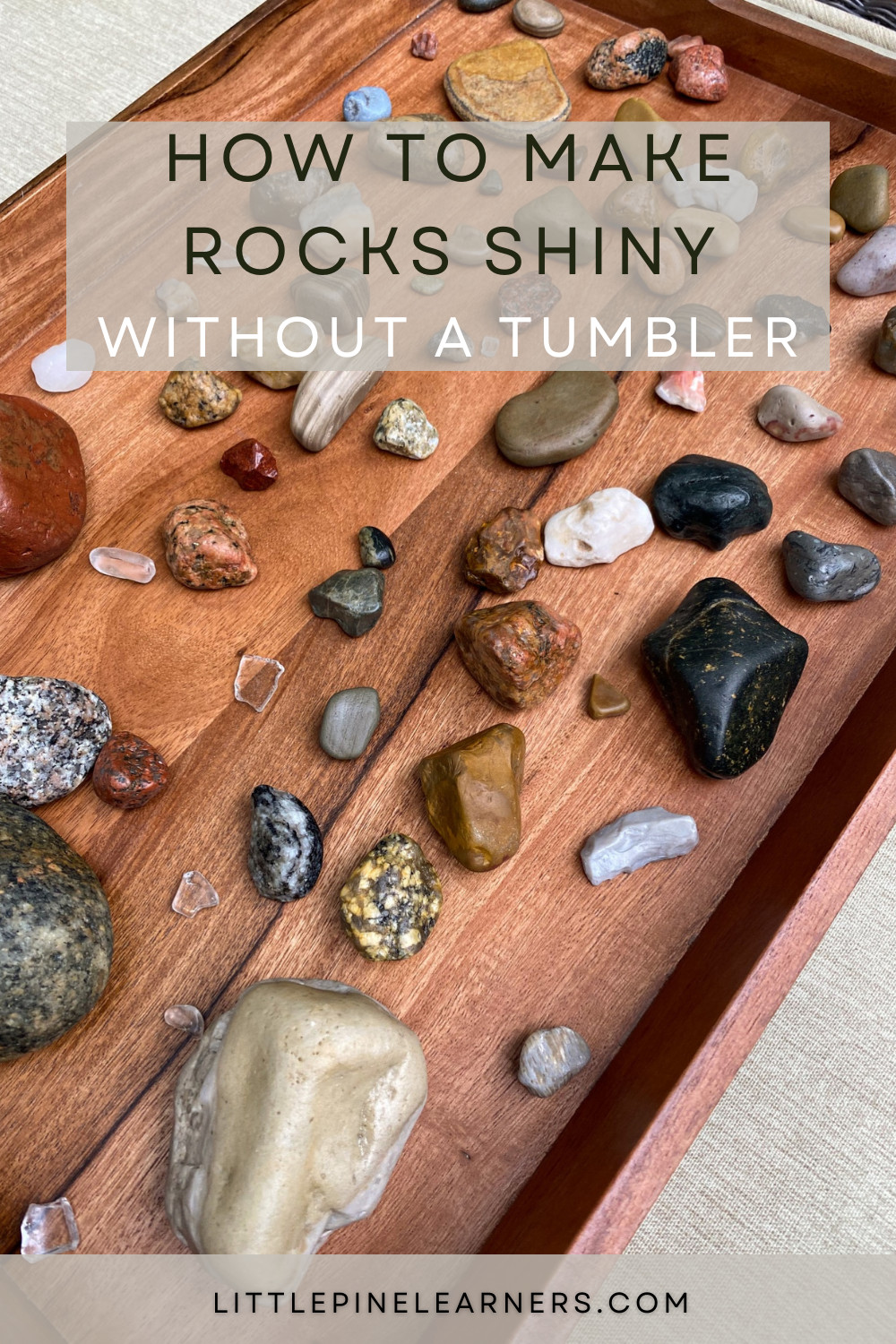 Assortment of small polished beach stones, showing a range of colors and smooth textures ideal for decorative use
Assortment of small polished beach stones, showing a range of colors and smooth textures ideal for decorative use
FAQ About Shiny Rocks
1. How often should I re-oil my rocks to keep them shiny?
You should re-oil your rocks every few weeks, or when you notice the shine starts to fade. Reapplication helps maintain their luster.
2. Can I use any type of oil to polish rocks?
No, it’s best to use mineral oil or jojoba oil. These oils are non-toxic and effective for enhancing the rock’s natural colors.
3. Is rock tumbling a difficult process?
Rock tumbling requires patience but is not difficult. It involves several stages of grinding and polishing over a few weeks.
4. What if my tumbled rocks don’t shine as expected?
Ensure you’ve followed all stages of tumbling correctly, using the appropriate grit for each stage. The final polishing stage is crucial for achieving the shine.
5. Are there certain rocks that are not suitable for polishing?
Soft rocks like shale or chalk are not ideal for polishing as they can easily crumble during the process.
6. Can I use shiny rocks in my aquarium?
Yes, but make sure the rocks are thoroughly cleaned and non-toxic. Avoid rocks with metallic inclusions that could leach into the water.
7. How do I clean shiny rocks that are used outdoors?
Use a soft brush and mild soap to clean outdoor shiny rocks. Rinse them thoroughly with water and allow them to air dry.
8. Can I combine different types of shiny rocks in my garden design?
Yes, combining different types of shiny rocks can create a visually appealing and diverse landscape.
9. What safety precautions should I take when using polishing compounds?
Always wear a dust mask and gloves when handling polishing compounds to avoid inhaling fine particles or skin irritation.
10. Where can I find high-quality shiny rocks for my landscaping project?
Rockscapes.net offers a wide selection of high-quality rocks perfect for any landscaping or decorative project.
Address: 1151 S Forest Ave, Tempe, AZ 85281, United States
Phone: +1 (480) 965-9011
Website: rockscapes.net